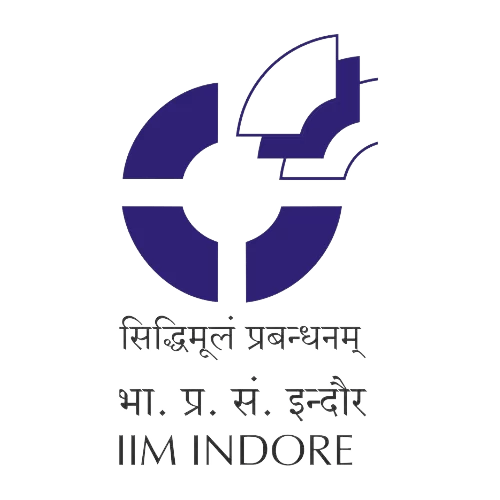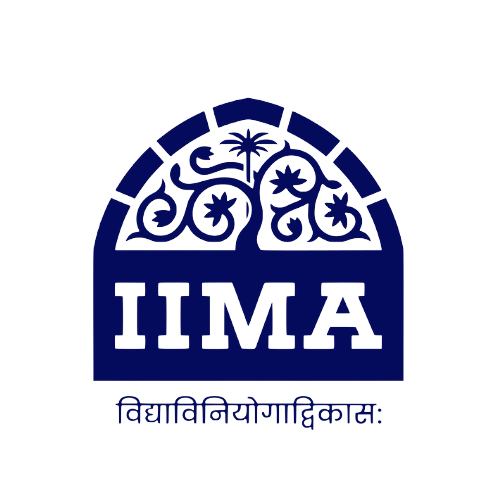- Is IMI Delhi better than IMT Ghaziabad?
ANSWER: IMT Ghaziabad and IMI Delhi are two of the most prestigious management schools in the national capital region.
- Converted IMT Ghaziabad or IMI Delhi PGDM, which one should I prefer?
ANSWER: Apart from its excellent evaluations and rankings for PGDM Marketing, IMT Ghaziabad is well recognised for its large alumni base. I discovered various testimonies attesting to IMT’s excellent learning possibilities in collaboration with reputable overseas institutions and universities.
IMT Ghaziabad is the superior brand; nevertheless, placement stats are overstated. However, consider the brand: imt Ghaziabad is a more well-known brand than IMI Delhi, and many organisations visit imt for tasks that they do not undertake at IMI Delhi.
- How is IMI New Delhi? In terms of placements, infrastructure, faculty etc.
ANSWER: There are now a few reality checks for candidates to any of these institutes – First and foremost, do you actually have any other options outside these two universities? Second, because most colleges in this industry exaggerate their packages, it’s assumed that you may subtract 1.5-2 lakhs from the total to get at a more reasonable value. Third, you know your percentile won’t get you into any of the top 5 IIMs, ISBs, or XLRIs, so should you really expect packages that reflect that? Fourth, if you still choose to pursue an MBA from one of these two schools, be prepared to put in extra effort and never look back. I made the choice two years ago and promised myself that I’d do whatever it took to win the race and meet eye to eye with my colleagues at IIM A, B, C, and so on. Certainly not the finest infrastructure. Because the school is small, first-year students live off campus while second-year students live in campus hostels. Faculty – a mix of the finest and the worst, but you can be confident that you’ll learn what it takes to be a competent MBA. Work hard on developing an all-around profile with a solid CGPA, Positions of Responsibilities by participating in student organisations such as committees, clubs, and councils, events like as TEDx, Conventus, Kritva, and others, and winning a few good corporate and B-school contests. That concludes our discussion. You’ll never have to worry about landing a job since you’ve got the ideal recipe for being a candidate for any dream firm. My sole advise is to emphasise placements in the following order: profile, company, and package. Most aspirants believe in the opposite order, but they’re simply dreamers and under-informed, so I give it to them.
- Which is better IMT Ghaziabad PGDM (marketing) or IMI Delhi PGDM?
ANSWER: Both IMT Ghaziabad and IMI Delhi are extremely ancient and well-known management institutes in India, known for their excellent management programmes. IMT Ghaziabad, on the other hand, is the finest when it comes to providing a healthy learning atmosphere and on-campus placements with career support. Every year, roughly 70-75 percent of IMT Ghaziabad cohort members choose Marketing as a speciality, demonstrating applicants’ confidence in the program’s outcomes. Last year, over 150 firms from industries such as advertising, analytics, automobiles, BFSI, commodities, e-commerce, FMCD, FMCG, and other well-known domains attended the IMT G. INR 58.22 LPA was the highest CTC, while INR 13.60 LPA was the average. So, if you want to have a promising future, you should pursue it.
Ghaziabad Institute of Management Technology (IMT). In year-over-year B-School polls, IMT Ghaziabad has improved its ranks. IMT Ghaziabad also has a large alumni network, with more than 300 C-suite executives from all over the world. In addition, for the upcoming batch 2021-23, they have introduced three new initiatives, including a global immersion (Global connect week) in Europe/UK/Australia/US/Middle East as part of their course, 5% of the programme to be taught by international faculty, and a few certification programmes from renowned universities such as Oxford, Harvard, Cornell University, and others.
- Can I get an honest review of IMI Delhi, for both Core PGDM & HR programs?
ANSWER: When it comes to following your hobbies and progressing in your career, IMI New Delhi offers a wealth of options.
Let’s look at the programmes you’re interested in at IMI New Delhi and the opportunity they provide to clear up your worries.
PGDM: Do you want to advance in your management career but aren’t sure which specialisation to pursue? If you enrol in the PGDM programme at IMI New Delhi, you will gain clarity about the domain in which your interest lies after finishing a complete year of the course and going through the nitty-gritty of all management disciplines.
To provide an example of this scenario, I would say that when I first arrived to IMI, I was interested in finance, but after only three months, I have acquired a strong interest in marketing, and I am now looking for chances in this field as well.
Now, let’s look at the various PGDM specialised courses.
Marketing: The marketing course is interlaced with intriguing projects, guest lectures from industry leaders, highly experienced faculty, and workshops that will keep you active 24 hours a day, seven days a week. You may participate in a variety of clubs and committees, with verticals such as design, content writing, and sponsorship, that will help you develop your marketing skills and creativity throughout your time at the B-school. FMCG firms such as Asian Paints, Nestle, RPG Group, Reckitt Benckiser, Emami, HUL, Havmor, Piramal Group, Mother Dairy, and many other premium recruiters in this industry visit our campus every year when it comes to chances.
Finance: The finance course covers a wide range of topics to help students gain a better understanding of financial concepts. Throughout the year, there are lectures by prominent professors and a profusion of seminars to help you improve your knowledge. When it comes to job prospects, firms such as HSBC, Arcesium, and HUL come to our campus to interview candidates.
Operations: In addition to having some of the greatest operations professors, IMI Delhi provides a variety of disciplines such as Financial Econometrics, Logistics, and Supply Chain Management, among others. In reality, many students have chosen dual majors over the years (mainly finance and operations). Many organisations come to campus to recruit for various opportunities in the operations area, making it one of the most popular specialism streams.
PGDM HR: For those interested in pursuing a career in human resources, IMI provides a specific HRM curriculum that includes studies from not just the HR area but also analytics and strategy. The curriculum is geared to match the needs of the business, with options for additional subjects beyond the regular credit limitations.
- What would you choose for Finance- IMI Delhi, XIMB, or IMT-G?
ANSWER: IMI Delhi is out of the question since it lacks the brand recognition of IMT G or XIMB. In terms of marketing, IMT G is a far bigger brand than XIMB, with a wealth of potential.In the case of Finance, it would be a tie between IMT G and XIMB. However, while IMT G is recognised for marketing, I would pick XIMB because it has a lower batch strength and a more balanced brand in terms of finance. Furthermore, both schools would provide you with equal prospects, although IMT G would be slightly less expensive than XIMB.
- Does IMI Delhi provide hostels for all of its PGDM students or just the ones who are in their second year of their PGDM?
ANSWER: It’s a residential programme. Hostels are available for both first and second years. The rooms are air-conditioned and are set up as twin beds. For first-year students, hostels are located off campus in Adhchini, which is near by, and travelling is made possible by a bus service that runs 4-5 times each day. Previously, Ber Sarai had a rented hostel facility, which has been withdrawn this year. Second-year students live in completely air-conditioned hostels on campus.
- Does IMI Delhi placement reaches 12L for most of the batch? What’s the reality?
ANSWER: That is an excellent question. If you look at the 2018–19 placement report on the website, you will find the answers concealed in the report. Pretty much the percentile technique works for placement data too. The top ten percentile, the twenty percentile, and so on. The report and the same is more or less relevant for most business schools; the top 40 percentile of the batch drives the placement and they typically take the placement average almost upwards of 17lpa; however, as the next chunk of students enter the fray, the question is how much do they or can they pull down the average; in its entirety, we typically find that after the top 70 percentile the average starts getting pulled back and we typically find that after the top 70 percentile the average starts getting pulled back and we typically find that after That is where business schools are attempting to plug the leaks; for 2018–19, we could plug it at around 12ish, and that is what the report reflects; however, believe me when I say that if you are an aspirant, you should not look at average placement figures but rather target the top 40 percentile figures, or else the programme roi for you will become irrelevant.
- Is IMI Delhi a good college looking at all aspects like exposure, teaching, placements, etc.?
ANSWER: Each B-School is good on its own, therefore it only makes sense to compare them. Looking at all of your possibilities, the correct question could be if IMI Delhi is right for you.
IMI has already made its way into Tier I’s bottom echelons. Let’s take it one step at a time:
Selection procedure – A college’s selection procedure might be used to evaluate it. GDs are not held at IMI for applicants. Instead of GDs, they have essay writing and extempore, both of which are far superior to GDs. IMI’s admissions process is more rigorous than those of the other lower Tier I and upper Tier II universities. If you succeed, you should be pleased.
The quality of pupils admitted may be deduced from the preceding. Because the admissions process is so rigorous, a good group of students (with a good mix of culture, graduate streams, backgrounds, and sex orientation) gets admitted. This, however, is true of ALL COMPARABLE institutions.
Fees – I’m not sure how you feel about this, but believe me when I say it’s not too much. Given the excellent calibre of professors at a top B-School and the smaller batch size at IMI, the fees are slightly more, but the return on investment is fair.
Batch Strength – The most significant factor, and one that works in IMI’s benefit. IMI, on the other hand, has a tiny batch size. It is simple for a student to stand out in a small group, and it is also simple for the college to place all of the students in great firms and profiles.
Faulty – IMI was formerly ranked third in terms of intellectual capital. I’m not sure about the current situation, but the faculty quality at all Tier I/II B-Schools is amazing. Whereas B-Schools are all about practical knowledge, you can only get it from competent, experienced professors. IMI has everything.
Placements – I’d say it’s in between good and above average. However, it is becoming better every year. My juniors’ positions make me jealous. Look up placement numbers in the college’s brochure and multiply by 20% to get an approximate estimate. But, remuneration aside, the calibre of firms that come, the profiles that are available, and the diversity that is available are fantastic! And, certainly, each and every one of them is positioned.
Culture – Not as good as comparable Tier I universities. It is beginning to open up, but it will take some time. This is an extremely crucial issue to consider while choosing a B-School, but sadly, students pay the least attention to it. When you get accepted to one of the B-Schools and compare its culture to the others, you will recognise it. B-Schools are designed to help you develop in all areas of your life, a trait created by the culture.
Another disadvantage is the lack of infrastructure. The campus of IMI is somewhat tiny. They are attempting to make the best of the situation, but the limited space they have is a hindrance. There isn’t much room for improvement here.
- Why is IMI Delhi not good for somebody with an experience of 2.5 years? I have got a PGDM offer from IMI Delhi and I was looking for honest opinions about the college.
ANSWER: The current cohort of 2020 students have an average of 32 months of job experience. As a result, I’m not sure if the assertion is true in the first place. See, no matter which institution you attend, you will be presented with a variety of chances; nevertheless, it is up to you to decide how you will utilise them.
People frequently hold the bizarre belief that simply enrolling at a top-tier B school is sufficient. However, once enrolled in a B school, one must study diligently to maintain the institute’s academic requirements.
So, even someone with experience needs to be sincere and put in some serious effort, because the pool of candidates who apply to IMI is extremely competitive, and one must survive the same, as they are part of the crowd.
So, if you’re willing to put up your best effort over the next two years, IMI New Delhi is the place to be.
- What is your review of the college IMI Delhi?
ANSWER: Don’t be swayed by rankings. IMI Delhi, on the other hand, is one of India’s finest MBA programmes. Academics are essentially the same in all MBA programmes. The culture and teachers are what actually matter. Rankings represent the truth in this case. When we say we’re ranked third in terms of intellectual capital, we mean it. FYI, intellectual capital refers to the calibre of faculty at a given university, which at IMI is exceptional.
The second greatest thing that each MBA college has to offer is culture. This is currently in the early phases of development at IMI. At first, you might feel a little restricted. This is primarily due to the fact that you will be listening to stories from your friends who will be studying at IMT, MDI, SP Jain, and IIMs, among other institutions. These schools have a much more mature and open atmosphere.
During my two years at IMI, however, there was a significant positive shift in the culture. Many administrative adjustments have occurred, all of which have been beneficial.
Dr. Bakul Dholakia, our DG, has implemented some extremely open and successful adjustments based on his previous experience at IIM-A. He genuinely sits with an open door in his office, believe me.
Every year, placements improve, but this is a general trend across all universities, MBA, BE, etc. – many thanks to our excellent Prime Minister, Shri Narendra Modi. However, as a result of the combined influence of our two Gujaratis – our PM and our DG – IMI Delhi postings increased dramatically.
Aside from that, every Tier I and Tier II college will provide you with an incredible PGDM experience. It will be well worth your time and money. It will undoubtedly have a long-term effect on you and change you for the better. I would not advocate choosing an university that is ranked lower than this because the MBA programme at such colleges is named after them.
IMI Delhi is one of the best Tier II institutions in my opinion, with only the old IIMs, FMS, MDI, IIFT, SP Jain, Jamnalal Bajaj, XLRI, and NM Mumbai ranking higher. But believe me when I say that a kid from IMI Delhi could give these guys a run for their money at any time.3















